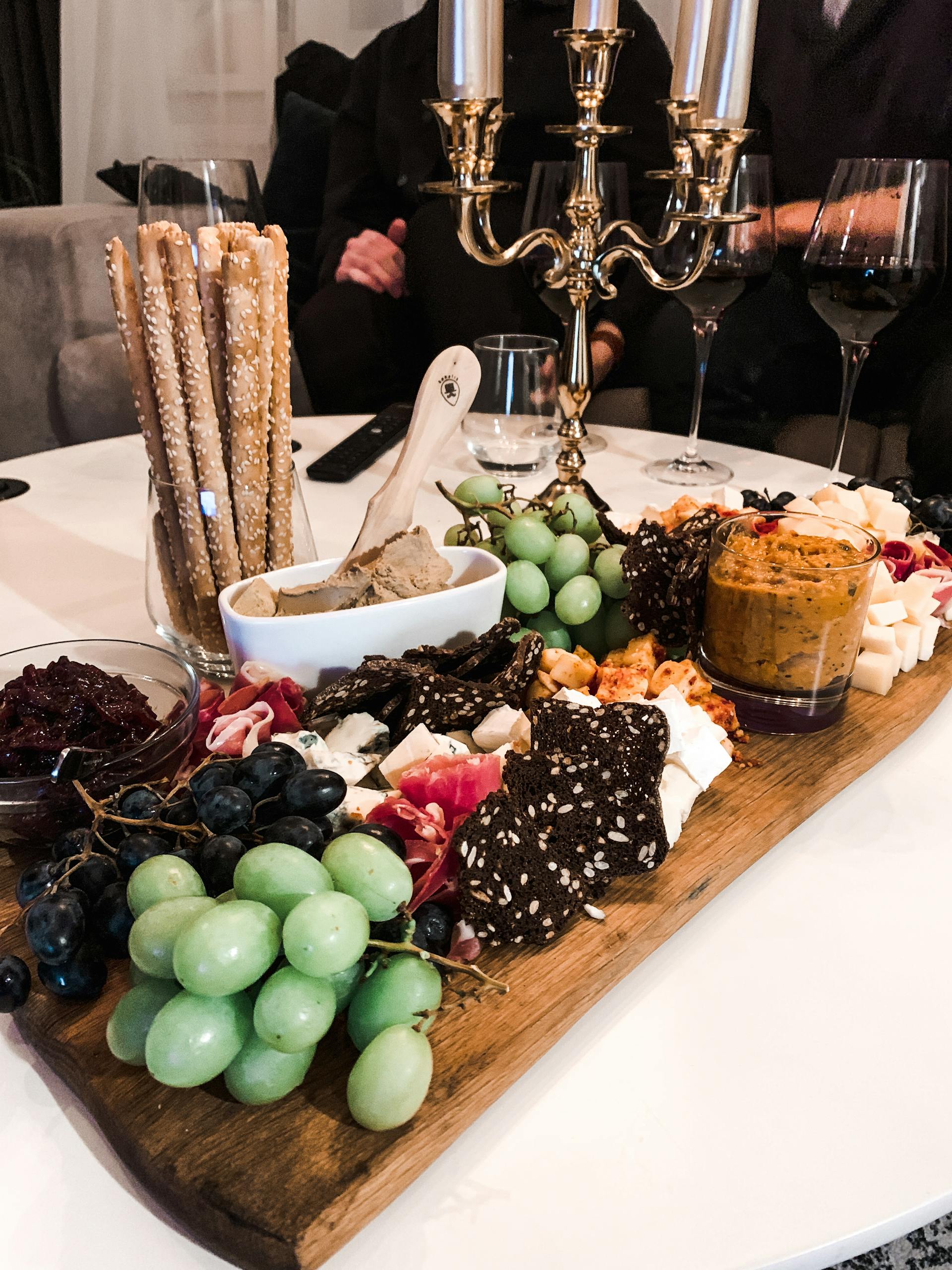
Introduction
Creating a charcuterie board is a fun and delicious way to impress guests or enjoy a snack. However, building the perfect charcuterie spread starts with having the right tools and ingredients. Whether you’re a beginner or seasoned charcuterie lover, this guide will walk you through everything you need to create a beautiful and balanced charcuterie board.
Essential Tools for Your Charcuterie Kit
1. A Quality Cutting Board or Serving Platter
A sturdy and aesthetically pleasing board is essential for presenting your charcuterie. Wooden, marble, or slate boards work well for both presentation and functionality. Opt for a large surface area to fit a variety of ingredients without overcrowding.
- Wooden Boards: Provide a rustic and natural look, ideal for casual gatherings.
- Marble or Slate Boards: Add an elegant and sophisticated touch to more formal settings.
2. Cheese Knives and Spreaders
Having the right knives and spreaders makes it easier to cut, serve, and spread different types of cheeses and spreads.
- Cheese Knife Set: Include a variety of knives such as a soft cheese knife, hard cheese slicer, and a spreader for creamy cheeses or pâtés.
3. Small Bowls or Ramekins
Small bowls are perfect for holding items like olives, nuts, pickles, or dips that might roll off the board. These containers help organize and prevent cross-contamination of flavors.
4. Tongs and Toothpicks
Tongs and toothpicks provide a hygienic way for guests to grab meats, cheeses, or other items from the board without handling them directly.
5. Decorative Elements (Optional)
Adding small elements like herbs, edible flowers, or leaves can enhance the visual appeal of the board and create a more refined presentation.
Must-Have Ingredients for Your Charcuterie Starter Kit
1. Cured Meats
A charcuterie board isn’t complete without a selection of cured meats. Aim for a variety of textures and flavors to keep things interesting.
- Salami: A classic choice, available in mild to spicy varieties.
- Prosciutto: Thinly sliced, salty, and slightly sweet, prosciutto adds elegance.
- Chorizo: Spanish or Mexican chorizo provides a spicy, smoky kick.
2. Cheeses
Including a variety of cheese textures—soft, semi-soft, and hard—ensures a balanced board.
- Soft Cheese: Brie or goat cheese is creamy and spreadable.
- Semi-Soft Cheese: Havarti or gouda offers a mild, buttery flavor.
- Hard Cheese: Aged cheddar or Parmigiano-Reggiano adds a sharp, nutty profile.
3. Crackers and Bread
Offer a variety of crackers, breadsticks, or thin slices of baguette to complement the meats and cheeses. Opt for neutral flavors so they don’t overpower the other ingredients.
4. Fruits and Vegetables
Adding fresh or dried fruits provides a sweet contrast to the salty, savory meats and cheeses.
- Fresh Fruits: Grapes, figs, berries, or apple slices add brightness and balance.
- Dried Fruits: Apricots, dates, or figs bring sweetness and a chewy texture.
5. Nuts and Olives
Nuts and olives add crunch and a savory element to your charcuterie spread. Almonds, walnuts, or marinated olives are popular choices that add both flavor and texture diversity.
6. Spreads and Dips
Incorporating spreads such as honey, mustard, or fig jam brings additional depth of flavor. These can complement both meats and cheeses.
- Honey: A drizzle of honey pairs beautifully with aged cheeses and salty meats.
- Fig Jam: A great addition for spreading on crackers with brie or goat cheese.
- Mustard: Whole grain or Dijon mustard adds a tangy, spicy kick.
Creating Balance in Your Charcuterie Board
A successful charcuterie board has a balance of flavors (salty, sweet, savory) and textures (creamy, crunchy, chewy). When assembling your board:
- Contrast Flavors: Pair salty meats with sweet fruits or spreads.
- Variety of Textures: Include creamy cheeses, crunchy nuts, and chewy dried fruits for a well-rounded experience.
How to Assemble Your Charcuterie Board
Start by placing larger items like cheese and meat piles on the board, leaving room for smaller additions. Then, fill in the gaps with crackers, fruits, nuts, and spreads. Use small bowls or ramekins for olives and dips. Finally, garnish with fresh herbs or flowers for a beautiful, finished look.
Conclusion
With the right tools and ingredients, creating a charcuterie board is a simple yet impressive way to entertain or indulge. By selecting a variety of cured meats, cheeses, and accompaniments, and using the proper tools, you can easily assemble a well-balanced and visually appealing charcuterie board that will satisfy your guests and elevate your dining experience.



